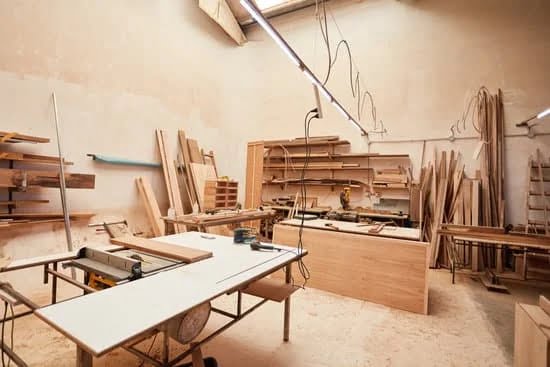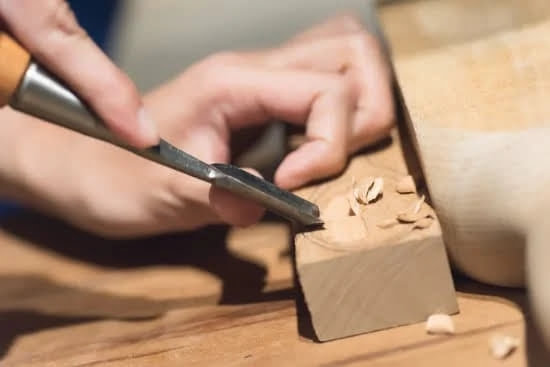Are you wondering, “can you remove woodwork from furniture“? Woodwork on furniture can add character and charm to a piece, but there may come a time when you want to remove it for a new look or repurpose the materials. In this article, we will discuss the process of removing woodwork from furniture. From understanding the different types of woodwork to the tools needed and safety tips, we’ll guide you through the process.
When it comes to furniture, woodwork can take on various forms including trim, molding, panels, and decorative accents. Understanding the type of woodwork on your furniture is crucial in determining the best approach for removal. We will delve into the different types of woodwork commonly found on furniture and how to identify them.
In addition to understanding the types of woodwork, having the right tools for the job is essential. From chisels and saws to hammers and pry bars, we’ll provide a comprehensive list of tools needed for safely and effectively removing woodwork from furniture. Keep reading as we take you through each step in our detailed guide coming up next.
Understanding the Types of Woodwork on Furniture
Woodwork on furniture can come in a variety of forms, each requiring different techniques for removal. Understanding the different types of woodwork will help you determine the best approach for removing it without damaging the rest of the piece.
Carvings
Carvings are ornate designs made by cutting away wood from the surface of furniture. These can be intricate and delicate, requiring precision and care when removing them from furniture.
Moldings
Moldings are strips of wood that are attached to furniture to add decorative detail. They can be removed using specific tools and techniques to avoid splintering or breaking.
Inlays
Inlays refer to pieces of decorative material set into the surface of furniture. These may include delicate patterns or designs created with different types of wood or other materials. Removing inlays without damaging them requires patience and skill.
Before attempting to remove any type of woodwork from furniture, it is important to assess the condition and intricacy of the piece in order to plan an appropriate removal method.
Tools Needed for Removing Woodwork From Furniture
Essential Tools
To remove woodwork from furniture, you will need several essential tools to ensure the process is successful. Some of these tools include a hammer, chisel, putty knife, utility knife, rubber mallet, and a small pry bar. These tools will help you to carefully and efficiently remove the woodwork without causing damage to the furniture frame or other components.
Protective Gear
In addition to the necessary tools, it is important to prioritize safety by wearing protective gear. Safety goggles will protect your eyes from flying wood particles and debris as you work on removing the woodwork. Gloves can also provide protection for your hands against splinters and sharp edges. Investing in a dust mask is also recommended to avoid inhaling any sawdust or small particles that may be released during the removal process.
Other Supplies
Apart from tools and protective gear, there are some additional supplies that can be useful when removing woodwork from furniture. Sandpaper can help smoothen any rough or uneven surfaces after the removal process.
A small vacuum cleaner or a brush can be handy for cleaning up any sawdust or debris left behind. It’s also a good idea to have some wood filler on hand in case there are any holes or gaps that need to be filled after removing the woodwork.
Step-by-Step Guide to Removing Woodwork From Furniture
The process of removing woodwork from furniture can be a daunting task, but with the right tools and techniques, it can be accomplished effectively. Whether you are looking to update an old piece of furniture or repurpose the wood for a new project, knowing how to remove woodwork is essential. In this section, we will provide a step-by-step guide to help you successfully remove woodwork from furniture.
Before you begin, it’s important to gather all the necessary tools for the job. Depending on the type of woodwork and furniture you are working with, you may need a variety of tools including a hammer, chisel, screwdriver, pliers, and sandpaper. These tools will help you carefully disassemble the furniture without causing any damage to the woodwork.
- Start by examining the furniture piece and determining how the woodwork is attached. This may involve removing screws, nails, or using a chisel to pry apart joints.
- Use caution when applying force to avoid splintering or damaging the surrounding areas.
- Once the woodwork has been successfully removed from the furniture piece, inspect it for any damage or residue that may need to be cleaned or sanded down.
By following these steps and exercising patience and care throughout the process, you can remove woodwork from furniture without causing any unnecessary damage. Remember that each piece of furniture is unique in its construction, so being thorough in your examination before starting will greatly benefit you in achieving your desired results.
| Step | Description |
|---|---|
| Gather Tools | Collect all necessary tools such as hammer, chisel, screwdriver, pliers. |
| Examine Furniture | Determine how the woodwork is attached and strategize its removal. |
| Clean Woodwork | Inspect removed pieces for any damage or residue that needs cleanup or sanding. |
Safety Tips for Woodwork Removal
When it comes to removing woodwork from furniture, safety should always be a top priority. Working with tools and potentially delicate furniture pieces requires caution and attention to detail to avoid any accidents or damage. Here are some important safety tips to keep in mind:
- Wear protective gear: Before starting the woodwork removal process, make sure to wear proper protective gear such as gloves, safety goggles, and a dust mask. This will help protect your hands, eyes, and respiratory system from any potential injuries or exposure to dust and debris.
- Use the right tools: It’s crucial to use the appropriate tools for removing woodwork from furniture. Depending on the type of woodwork and furniture piece, you may need tools such as a chisel, hammer, screwdriver, pry bar, or woodworking clamps. Using the right tools can help prevent accidents and ensure a smoother removal process.
- Work in a well-ventilated area: If possible, choose a well-ventilated workspace for removing woodwork from furniture. This will help prevent the buildup of dust and fumes, especially if you’re using power tools or chemical solvents for the removal process.
In addition to these safety tips, it’s important to take your time with the woodwork removal process and pay close attention to each step. Rushing through the removal process can lead to mistakes or accidents that can damage the furniture or cause harm to yourself. Always prioritize safety and patience when working on woodwork removal projects.
As you proceed with removing woodwork from furniture, always be mindful of any sharp edges or splinters that may be present. Handling woodwork pieces with care can help prevent cuts or injuries. By following these safety tips, you can ensure a safe and successful woodwork removal process for your furniture projects.
Common Mistakes to Avoid When Removing Woodwork From Furniture
When it comes to removing woodwork from furniture, there are several common mistakes that should be avoided in order to ensure a successful and safe process. Here are some of the most important things to keep in mind:
1. Not using the right tools: One of the biggest mistakes that you can make when removing woodwork from furniture is not using the appropriate tools for the job. Depending on the type of woodwork and furniture, you may need different tools such as chisels, screwdrivers, or a rubber mallet. Using the wrong tools can damage the woodwork or result in injury.
2. Rushing the process: Another mistake to avoid is rushing through the removal process. Taking your time and being patient is key to preventing damage to both the woodwork and the furniture itself. Carefully assessing each step and applying gentle pressure will help to ensure a smooth removal process.
3. Neglecting safety precautions: Safety should always be a top priority when removing woodwork from furniture. Failing to wear protective gear such as gloves and safety glasses can result in injury from splintered wood or flying debris. Additionally, working in a well-ventilated area when using chemical strippers or solvents is crucial to avoid exposure to harmful fumes.
By avoiding these common mistakes, you can successfully remove woodwork from furniture without causing any damage or harm along the way.
Creative Ways to Repurpose or Upcycle Woodwork From Furniture
After successfully removing woodwork from furniture, you may be left with various pieces of wood that can still be used for other projects. One creative way to repurpose these woodwork pieces is to use them for DIY home decor.
Small pieces can be transformed into unique wall art, decorative shelves, or even one-of-a-kind picture frames. Larger pieces of woodwork can also be used to create a custom headboard for your bed or a tabletop for a new piece of furniture.
Another option for repurposing woodwork from furniture is to use the pieces in outdoor projects. Fence panels, garden trellises, and planter boxes can all be constructed using old woodwork. The weathered look of the wood will add character and charm to your outdoor space while giving new life to pieces that might have otherwise been discarded.
For those with a little more woodworking skill, the old woodwork from your furniture can also be turned into unique and functional furniture pieces. Coffee tables, side tables, and benches are just a few examples of the types of furniture that can be created using repurposed woodwork. Adding a fresh coat of paint or stain can give these new creations a completely different look from their original form.
| Repurposing Idea | Description |
|---|---|
| DIY Home Decor | Transform small pieces into wall art, decorative shelves, or picture frames. |
| Outdoor Projects | Create fence panels, garden trellises, or planter boxes using old woodwork. |
| New Furniture Pieces | Talented individuals can turn old woodwork into coffee tables, benches, and more with some woodworking skills. |
Conclusion
In conclusion, removing woodwork from furniture can be a challenging but rewarding task for those looking to repurpose or upcycle old pieces. Whether it’s intricate molding, decorative trim, or other types of woodwork, the process requires a steady hand and the right tools. Understanding the different types of woodwork and using the appropriate tools are essential steps in successfully removing woodwork from furniture.
When approaching the task of removing woodwork from furniture, it is important to consider safety first. Using protective gear such as goggles and gloves can help prevent injuries. Additionally, taking the time to carefully plan out each step of the removal process can minimize mistakes and ensure a smooth outcome.
Once the woodwork has been successfully removed, there are endless creative possibilities for repurposing or upcycling it. From creating new decorative pieces to incorporating it into other furniture projects, the salvaged woodwork can bring new life and character to various DIY ventures.
Overall, while removing woodwork from furniture requires patience and precision, the end result can be incredibly satisfying. Whether you’re looking to refresh an outdated piece or simply enjoy working with your hands, this task offers a unique opportunity to breathe new life into old furniture and unleash your creativity.
Frequently Asked Questions
Can Furniture With Woodworm Be Saved?
Furniture with woodworm can potentially be saved, depending on the extent of the infestation. If the woodworm infestation is caught early and the damage is minimal, then a professional treatment to eradicate the woodworm may save the furniture. However, if the infestation has caused significant structural damage, it may be more cost-effective to replace the piece of furniture.
How Long Does Woodworm Live in Furniture?
The lifespan of a woodworm in furniture can vary depending on environmental conditions and species. Generally, adult beetles can live for a few weeks to several months, during which time they lay eggs in wooden surfaces.
The eggs hatch into larvae, which can live within the wood for anywhere from 2 to 5 years as they feed and grow before emerging as adult beetles.
Does Vinegar Kill Woodworm?
While vinegar is known for its natural cleaning properties, it is not generally considered an effective solution for killing woodworm. To effectively treat woodworm infestations, it’s best to use specialized insecticidal treatments designed specifically for this purpose.
These treatments are formulated to penetrate the wood and kill both active larvae and eggs, providing more thorough protection against wood-boring insects.

Hi everyone! I’m a woodworker and blogger, and this is my woodworking blog. In my blog, I share tips and tricks for woodworkers of all skill levels, as well as project ideas that you can try yourself.





